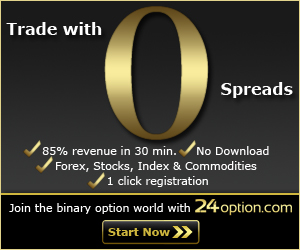Trading Oil, Gold and other commodities or Dow futures is exactly the same as trading Forex, or anything else. Trading is distinct from buying shares and it allows two big advantages.
1) You can profit from falling prices just the same as rising prices, by selling first rather than buying.
2) Through 'leverage' you can effectively buy huge quantities with just a small deposit. This means can make a good sized profit from a small move up or down in price. Naturally this has risks professional traders always put in an automatic 'stop loss' to close the trade should the price move against the position by a set amount. Similarly most traders use an automatic 'limit' to close the trade for a set profit.
Setting up an account as many Forex brokers allow you to trade oil, gold and the Dow. Forex is traded most often on the MetaTrader 4 platform which usually includes these instruments as well.
MetaTraders have many sorts of added instruments including shares and sometimes including the DOW, CDs and ETFs. To reveal these all that is needed to right click in the Market Watch window (where the currency pairs are displayed) and click on 'Show All'.
Market signals can be obtained directly from MetaTrader irrespective of which broker you use and you can actually place the trades anywhere you like - including spread betting. The amount of capital you require varies between brokers. Most will trade mini contracts for which you need a minimum of a thousand dollars in your account. If you trade the micro contracts (0.01 contracts) you can actually start with $100 or less but you won't get rich because the amount being traded is miniscule!
Futures prices are simply an estimated price for delivery at a set date in the near future. It really makes no difference to your trading.
Here is how a typical trade for oil works. Say the quoted price is 81.50 - 81.56 so this means that you can buy at 81.56 oil and sell at 81.50 - the difference in prices being the broker's profit. Say there is a sell signal on our chart, in which case you sell 0.1 contracts or $1 (or £1) a pip. Now, a 'pip' is the smallest movement, which in this case is 0.01 or a one cent move. At the same time put in a stop loss at 84.00 (250 pips up in the 'wrong' direction because you are selling and want the price to go down) and a take profit of 76.50 (500 pips in the hoped-for direction). Then simply wait anything from two days to a week on average.
This type of trading and much more is fully explained in the illustrated guide that accompanies the Oil Trader system.

